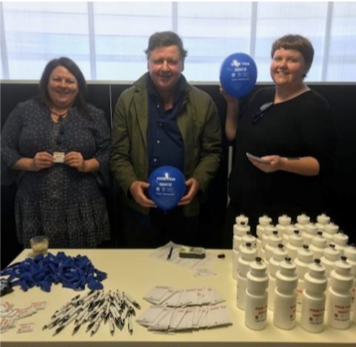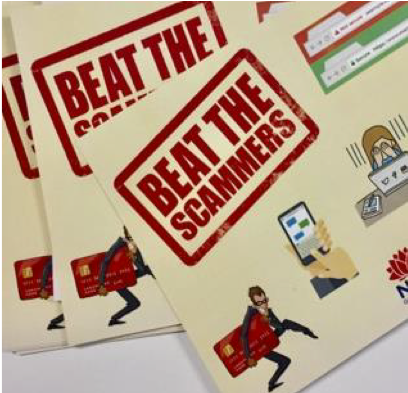Related information and links
Focus on outreach strategies to connect with your community and the effective delivery of your content.
The third part of the co-design process is about delivery.
On this page
Outreach
Watch the video below to see outreach examples focused on community radio and the use of social media.
Kelli and the team in Broken Hill also got the word out through their local community radio station, while Tania and Suzy used their social media profiles and links to peers to promote consumer law messages.
Other community outreach strategies used by the partners included linking through disability service providers, outreach through ethno-specific groups, community cultural events, utilising existing peer networks and more.
Here is an example of a flyer (PDF, 953.14 KB) produced by Diversity and Disability Alliance about a TnT Workshop that went out to Arabic speaking communities.
Outreach becomes much easier if you have really connected with your community and you have peers involved.
If you are struggling to get the message out to the target community, you may not be as connected as you’d like to be. Why don't you go back to the first section of this toolkit - Engage with communities and have a look at messages and ideas there?
Delivering content
When it comes to delivering content, the peers really came into their own. Their creativity and inventiveness brought the material to life and made it relatable.
At TnT each of the community partners did things slightly differently (learn more about the design and delivery models.) Yet in the overall independent evaluation, similar strengths were reported:
- face-to-face workshops supported engagement, interaction, sharing, questions and clarification of information – and understanding in a way that online information would not
- participants generally found information easy to understand
- participants were engaged and asked questions
- co-facilitators built rapport with participants, so people felt comfortable to share
- peer facilitators helped participants feel connected and engaged in the messages
- peer facilitators helped build trust with participants – 'the guards went down'
- peer facilitator stories about their own experiences made the content relatable and helped spark discussion
- role plays and other interactive activities made workshops engaging and helped make information understandable.
In the video you hear from the folks who attend a program run by Mission Australia in Broken Hill. They came to some of the workshops delivered by the peers from Being, and Angela, the local Fair Trading staff member. They said:

It’s clear that the peers involved in delivering the content were as important as how the content was delivered.
Check out this PowerPoint slide (PPTX, 344.41 KB) used by Diversity and Disability Alliance to get the message about scams across to people from diverse cultural communities.
In the Engage with communities section, we talked about the power of language, mostly in the context of using inclusive language and checking with communities what terminologies they prefer.
At TnT, in terms of delivering the content, the message was pretty clear: It’s all about easy read/plain English. Jargon, if it is used at all, needs to explained at the start.
The use of easy read/plain English doesn't just work better for people with cognitive disability. It works better for everyone.
Did you know? 40 per cent of Australians have literacy levels below what is considered necessary to get by in everyday life.
- Australian Bureau of Statistics (2013.)
To get on top of this and start thinking creatively, check out 'What is easy read?' from The Information Access Group.
![]()
Task:
- Think you can do it? Easy read/plain English is easy to speak and write in. Have a go at this government document (Standard 1 of National Disability Standards) and see what you can do.
- How would you go about using an easy read/plain English approach to this first standard?
- Have a look at this easy read/plain English version of the above document.
Creating new resources
In the TnT project, we worked together and created new written resources, making them work for the communities they were intended for. Check out some of the different resources developed for this project.

Caption: Peers from Being, one of the partner organisations, with some of the merchandise they developed.

Caption: One of the resources developed by the Being peers and NSW Fair Trading staff.
There was a lot of creativity in getting the messages across in the workshops. In one workshop, one of the Fair Trading staff took on the role of being ‘Miss Boring Consumer Law’ while others got to really play it up. Games and role play really helped.
Watch the video of a role play developed by the peers from Being, highlighting the sensitive topic of romance scams:
When we talked to Steve about this role play he said that this role play got people laughing, yet it also got them talking about loneliness and being vulnerable. It really got to the heart of the matter.
![]()
Task: